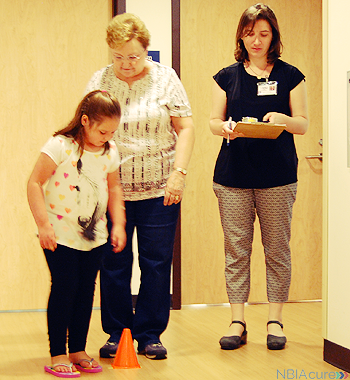 NBIA researcher Dr. Penelope Hogarth has been awarded startup funds from the Oregon Clinical & Translational Research Institute for developing projects that demonstrate exceptional clinical and translational promise. Translational research involves taking basic science discovery gained through laboratory experiments and “translating” that information into useful medical practices. These funds will support research centered on BPAN, one of the more recently identified NBIA disorders.
NBIA researcher Dr. Penelope Hogarth has been awarded startup funds from the Oregon Clinical & Translational Research Institute for developing projects that demonstrate exceptional clinical and translational promise. Translational research involves taking basic science discovery gained through laboratory experiments and “translating” that information into useful medical practices. These funds will support research centered on BPAN, one of the more recently identified NBIA disorders.
In 2012, our NBIA research team and our collaborators discovered that a mutation in the WDR45 gene was responsible for a form of NBIA called Beta-propeller Protein-Associated Neurodegeneration (BPAN). As individuals were tested and genetically confirmed to have mutations in the BPAN gene, Dr. Hogarth noticed that some of them had a previous clinical diagnosis of Rett syndrome. Rett syndrome is another rare, X-linked neurodevelopmental disorder.
Both BPAN and Rett syndrome affect girls almost exclusively. The two disorders share genetic features and clinical features such as seizures, loss of language skills, unusual hand movements, impaired sleep, walking problems, and intellectual disability. Dr. Hogarth hypothesized that some girls with a clinical diagnosis of Rett syndrome, but no mutation in the known Rett genes, might test positive for a mutation in the BPAN gene. Our NBIA research team is working closely with the Rett syndrome community in the U.S. and Europe in hope of identifying these individuals.
Since Rett syndrome and BPAN are rare disorders, our study participants are located all over the map. In this study, we are able to collect the data we need by talking to families over the phone and sending them special saliva kits to collect DNA. Jokingly called “spit kits,” these are small kits that can be used at home in about 5-10 minutes.
When our lab receives a saliva sample, the contents of the tube are inspected to ensure that we have enough to complete our work. Saliva is mostly made up of water (about 99%), but there is also a tiny portion of cells. The first step is to isolate those cells. Then, a detergent is added, which breaks each cell open. Inside each cell is a copy of that person’s DNA. DNA is a chemical structure made up of genes that carry genetic information, which determine human characteristics such as eye color, hair color, blood type, or if a person is male or female.
Each human has 20,000-25,000 genes, but our lab is only looking at one of those genes, called WDR45. WDR45 is made up of about 25,000 DNA bases that are arranged in a particular sequence. If there’s a variation in one of those 25,000 DNA bases, that means that there’s a genetic change (also called a mutation) present in the gene.
In a population, genetic changes can be rare or common. Some genetic changes are harmless while others might put a person at risk for a certain disorder. A genetic change in the WDR45 gene causes BPAN.
The gene of interest is isolated and amplified, which means we make billions of copies of that one gene. Those copies of the gene are sent to a lab that specializes in determining the exact sequence of its DNA. The sequencing lab returns a final report to our lab. Then, one of our lab technicians scans through the report reviewing the sequence of all 25,000 DNA bases present in the WDR45 gene to determine if there is a genetic change. This process can take several months, since we try to run them in batches to be most efficient. Through our studies of WDR45, we hope to better understand the connection between BPAN and Rett syndrome.
Copyright © 2014 by NBIAcure.org. All rights reserved.